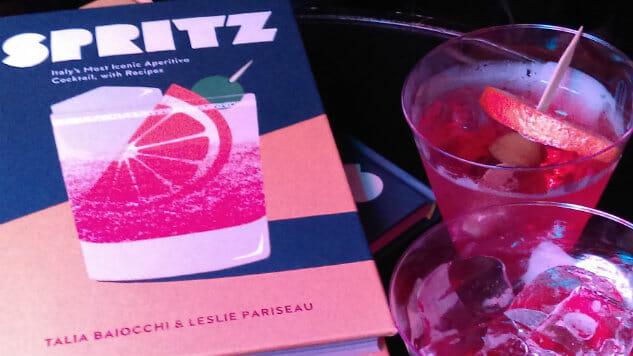Literary Foodies Unite
Food Writers Give an Inside Peek at the Food Publishing Industry at the Food Book Fair 2016

On a rainy Sunday morning, a hearty collection of toddlers, parents, and storytellers gathered in the covered garden space of Brooklyn’s Wythe Hotel for the “Junior” division of the annual Food Book Fair. Despite the inclement weather, they sang food-related songs, read picture books such as “Harold’s Hungry Eyes,” and learned about composting.
Meanwhile, adult foodies were experiencing food in quite the different light. Representing the “Food and Fiction” panel were Stephanie Danler, author of the forthcoming novel “Sweetbitter,” Jessica Tom, author of the novel “Food Whore,” and Helen Ellis, whose latest is the short-story collection “American Housewife.”
The concept of food as a metaphor for sex was one of the first topics. “Food is also about beauty, identity, finding and projecting who you want to be,” said Tom, “so I think it’s more that it’s about things sex is about also.” Another potential similarity: “Food is a source of power,” said Ellis. “There is power in accepting, or rejecting, someone’s food.”
Asked if she had an audience in mind when writing, Ellis said, “I wrote the book for women. I wasn’t too concerned about male readers.” (This refreshing view generated a thankful “Woo!” from a female audience member.) Danler, meanwhile, leaned away from the notion of keeping an audience in mind, noting that she wrote for herself. “You have to be certain that you wrote the book you would just die over,” she said. “The book you’d want to read.”
The panelists were emphatic on some issues—and often funny. Asked whether she’s willing to be placed in a “food genre” as a writer, Ellis called out cheerfully, “I love genre! It helps potential readers find my work.” Of her inspirations, Danler said that in addition to the cookbooks she uses, “I have aspirational cookbooks—I’ll never be able to make anything in there, but I like to look at the pictures.” She also mentioned two specific poems—“Oysters,” by Seamus Heaney, and an untitled poem that begins “Light clarity avocado salad in the morning,” by Frank O’Hara—that she kept on her desk throughout her writing process. (“I’m a huge booster for poetry,” she said in conversation after the panel. “I think it should get so much more visibility than it does.”)
Regarding ways in which her protagonist resembles herself, Danler, a former waitress, said she “started with a few facts about my life. But then you’re in a [writing] tunnel, and suddenly the characters are talking to you.” As for being her protagonist’s age, 22, Danler (now in her early 30s) admitted that she doesn’t remember it clearly—“I think I was drunk a lot!” Tom revealed that her protagonist “has some things in common with me—but I’m cautious and boring, and she’s not.”
At a later panel titled “Foodieodicals Today,” topics ranged from priorities in the current world of print media (“We have resisted working with distributors—they could get us into Barnes and Noble, but is that useful now?” wondered Anna Dunn, editor in chief of “Diner Journal”) to the motivations for current projects (“I felt like my stories [as a food-and-craft stylist] were getting ruined by editors and art directors!” joked blogger-turned-print-editor Paul Lowe, who heads the magazine “Sweet Paul”).
-

-

-

-

-

-

-

-

-

-

-

-

-

-

-

-

-

-

-

-

-

-

-

-

-

-

-

-

-

-

-

-

-

-

-

-

-

-

-

-








































